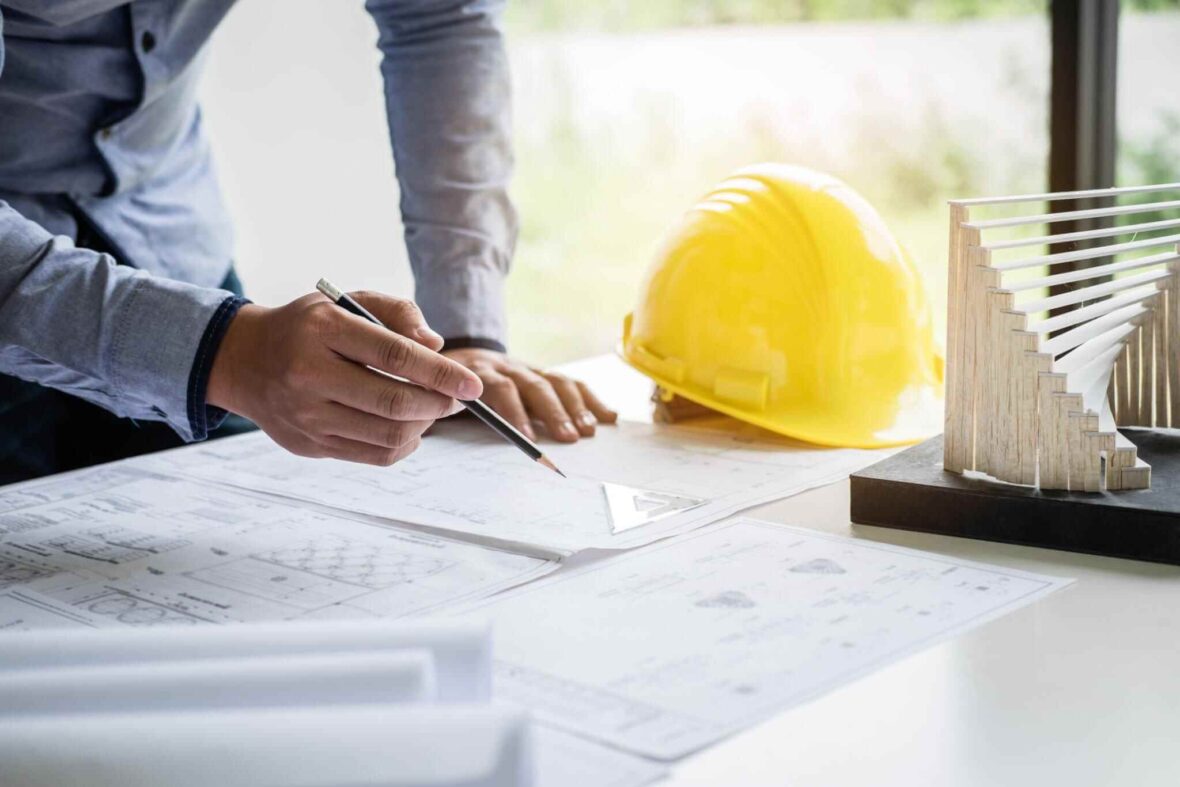Silos are more than just physical barriers, they can also affect communication and collaboration across departments. One way to combat silos is to promote effective communication and documentation tools such as Trello. Design-Build removes the need for competitive bidding and allows professionals to work in tandem, resulting in a faster construction process and seamless integration. This delivery method also offers owners numerous benefits including:
Contents
1. Enhanced Collaboration
A major problem that can plague construction projects is a lack of collaboration between the design team and the construction team. In traditional project delivery methods, once the design team completes their work, they hand off the design to a general contractor to build it. This can cause a chasm of communication between the two teams, which can lead to missed deadlines and an end product that doesn’t match the initial plans. With Design-Build, the design and construction phases are incorporated into one contract with a single point of responsibility.
This streamlines communication between the designers and contractors, which can save time. It also allows the designers and contractors to collaborate throughout the entire process, instead of separating into different phases. This type of collaborative work helps to ensure that the final result meets the design intent while minimizing change orders and costs.
In addition, a single contract establishes an accurate budget at the outset of the project that eliminates potential surprises down the line. This can help prevent overspend and other financial pitfalls that are often seen in traditional construction projects.
2. Streamlined Communication
Streamlined communication is a key component of Design-Build Construction and helps to ensure that projects run smoothly. When multiple teams are involved in a project, it can be difficult to get everyone on the same page. With Design-Build, the designers and contractors work as a team to communicate clearly and efficiently, so that there are no miscommunications.
This helps to keep the project moving forward on schedule and minimizes costly delays caused by misunderstandings or miscommunication. Typically with traditional project delivery methods, such as design-bid-build, the designers and builders operate separately. This can result in a gap between what the owner wants and what is built. For example, the owner may specify hidden power access in the design, which is great but a contractor or electrician might interpret this differently and end up delivering something that doesn’t fully meet the original expectations.
With Design-Build, the designer and construction companies work together as a team from the start. This provides unified project recommendations and eliminates the need for separate meetings or blame-shifting when issues arise. This can greatly reduce the overall time commitment for the owner and eliminate unnecessary stress during the construction process.
3. Accelerated Project Timelines
While project timelines will always be impacted by unavoidable delays, a team working cohesively toward one common goal can find ways to expedite the completion of a design build construction project. This can be done by looking at excusable delays and identifying opportunities to shorten the duration of activities, by using prefabricated components that are ready for installation when needed, by adding resources in advance, or other strategies.
With a single point of contact, communication is streamlined and accountability is established throughout the construction process. This helps to keep change orders minimal, saving money on labor and materials. It’s no wonder design-build is rapidly overtaking the old design-bid-build model as the industry standard. With increased state and local government backing and 43 states allowing for full or partially permitted authorization to utilize this construction delivery method on public agency projects, it’s clear that the advantages of working with one entity under one contract are significant.
When looking for a contractor to take on your next construction project, consider the benefits of a design-build partner and ask them about their experience with this method of construction.
4. Cost Savings
A key component of design-build is its ability to deliver cost savings. Since a design-build team is comprised of contractors, architects, and engineers, it’s incentivized to find creative ways to meet your project’s needs within budget. They are also familiar with construction processes which can prevent the need for costly changes later on. Additionally, the design-build team will perform value engineering during the earliest stages of a project.
This process will bring in the contractor, engineers, and specialty trade contractors to propose best-value solutions for construction elements throughout the design phase. This enables the project to be built in an efficient manner and ensures that the project stays on schedule and within budget. As opposed to the traditional method of building projects, which often pits a designer against a contractor, design-build teams are united under one contract with the same single point of responsibility.
This fosters a culture of collaborative problem-solving, innovation, and accountability. As a result, the design-build model outperforms various other construction delivery methods in terms of cost savings, schedule speed, and overall performance.
5. Accountability And Single-Point Responsibility
In design-build, all team members work under a single contract and one point of accountability. This streamlines communication and ensures all aspects of construction are progressing smoothly and efficiently, keeping change orders to a minimum. Depending on the structure of the project, initial construction may also begin during the design phase, speeding things up even further. During the design-build process, an experienced construction management company will be responsible for coordinating and hiring all subcontractors.
This can free up time for the owner to focus on other aspects of the project or manage the building itself. The design-build firm will also be responsible for ensuring everyone is on the same page and meeting the project’s goals, budget, and schedule. This can help eliminate conflicting recommendations from the contractor and architect, a major source of problems on other construction projects. Ultimately, this can lead to better quality and litigation-free builds. It can also minimize claims for extras, another major problem that often arises on other types of construction projects.
This is because the contractor and designer are the same entity under a single contract, meaning they cannot request additional compensation based on errors or omissions that were previously concealed.
6. Innovation And Flexibility
Design-build teams work together and focus on the success of the project as a whole, rather than focusing on their own individual area of expertise. This helps prevent misunderstandings between designers and contractors, as well as eliminates the turf wars that occur in traditional project delivery methods. This approach also allows for a higher level of creativity and flexibility, especially during the design phase. This is where the designer, architect, and contractor can collaborate to create innovative solutions that will help to streamline the construction process.
The design-build method is still relatively new to the industry and may be unfamiliar to some architects, engineers, and contractors. However, it has been rapidly gaining popularity and is now considered the preferred method of project delivery. To help ease the transition, we suggest incorporating design-build into your contract specifications early on so all parties can be prepared for this alternative project delivery method. It will also help to ensure that the design-build team is qualified to execute the work, reducing potential risks and delays down the road.
7. Reduced Risks

Design-build teams are able to work with both engineers and contractors at the same time, which can reduce risks for the project. This can help to reduce cost overruns, schedule delays, and other potential setbacks that may occur in traditional plan-and-spec construction.
When working with a design-build contractor, you want to ensure that they are reputable and have experience with projects similar to yours. You can do this by asking for references or reviewing online reviews. It is also important to read a company’s portfolio before hiring them for any type of project.
8. Quality Assurance
In design-build, contractors are involved from the very beginning of planning to create a clear vision of your project’s goals and objectives. This allows them to identify areas where cost savings can be made and ensure that your construction is in line with initial plans. With traditional projects, designers hand off plans to a general contractor, which can lead to delays and confusion because there’s no communication throughout the process. This lack of communication can also add to the overall cost of your project because you’re paying for multiple different companies with varying levels of expertise.
With design-build, your project manager will be a single point of contact for the entire process and they’ll keep you updated throughout. This will help to eliminate the time-consuming back-and-forth between multiple companies, and you can rest assured that your project is being completed in line with all of your goals, timelines, and construction KPIs. To ensure that you choose the right contractor for your project, be sure to read online reviews and ask to see portfolios of previous work.
Conclusion
Design-build construction offers numerous advantages for seamless project delivery. Breaking down the silos between design and construction enhances collaboration, streamlines communication, accelerates project timelines, and reduces costs. The single-point responsibility and accountability fostered by design-build construction lead to improved quality assurance and risk management.
Furthermore, the integrated approach promotes innovation and flexibility, allowing for real-time adjustments and adaptations during construction. As the construction industry continues to evolve, design-build construction stands out as a highly efficient and effective project delivery method.




